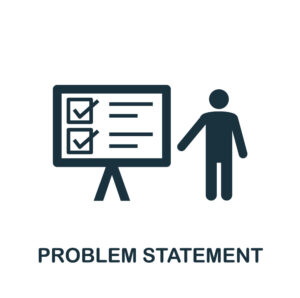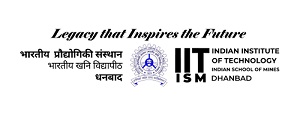CHANAKYA- GI Fellowships (for 10 months)
UG fellowship for a period of 10 months i.e., during final year project duration will awarded to a maximum of 220 students spread over five years. The fellowship will be Rs. 10,000/- per month for 10 months. The total estimated cost per unit is Rs 1,00,000 under Recurring cost. No Non-Recurring and Capital expenditure involved under this component.
Eligibility Criteria:
• Students from B.Tech/BE in any discipline in their 1st, 2nd, 3rd and 4th year of program can apply.• Students from Integrated M.Sc./ M.Tech in their 1st , 2nd, 3rd 4th and 5th year can apply.
• A minimum CGPA of 7.0 is required
• Student have to take atleast one Mentor from his/her Institute to work on the project.
• Student should not be availing any other fellowship during TexMin fellowship.
Selection Process:
• Selection would be done based on the technical merit, originality, and feasibility of the proposal.• Preference will be given to proposals with faculty mentor.
Benefits:
• Golden and unique opportunity to apply your innovative ideas to solve real world problems.• A monthly fellowship of 10,000 INR for Ten months will be given.
• Seperate funding will be given for development of the idea.
• Funding opportunity for creating start-ups and getting incubated at TexMin at the end of the fellowship period.
• Opportunity to Interact with industries working in the CPS domain.
Points to Note:
• Around 20 UG fellowships are available for the year 2021-22.• Regularly monitoring of the selected proposals
• Fellowship may be stopped based on unsatisfactory progress
How to Submit:
• Proposals should be submitted along with required documents like:Mentor's Consent Letter ,
Format Project Proposal (Download Links)
• Student have to choose atleast one problem from respective sub-domains while registration.
• For any other information, please contact: texmin@iitism.ac.in (with subject as Enquiry UG Call for Proposal 2021)

a. Development of Geological and Geophysical maps on the same scale.
b. 3D and 4D maps on the basis of integrated studies.
c. Better resolution geological map using Artificial Algorithm
d. Developing 3D optimization tools for joint inversion of data sets constraining with petrophysics
e. Identifying new and potentially viable areas to mine: Locating deep concealed deposits and resist drilling using AI and other CPS technologies
f. Developing 3D optimization tools for joint inversion of data sets constraining with petrophysics
g. Cross well tomography
h. Lower the cost of exploration through pattern matching, predictive analytics and computer Vision systems (AR & VR)
i. Development of an autonomous multi-rotor unmanned aerial vehicle for geophysical survey
j. Petrophysical data sets of different metallogenic province of India
k. Interpretational techniques for hyper spectral data
l. hand-held and down-hole analytical instruments
m. directional drilling, better bits, down-hole logging
n. improvements in slim hole drilling and in-situ measurements
o. Mineral mapping and feature extraction for HSI.
• Improving the operational efficiency (OE), availability and utilization of machines through AI based predictive maintenance.
• 3D simulation & Modelling
• Digital Twins: By creating a virtual model that is fed real-time data from the field, scenarios can be quickly tested, and operations and production can be optimized
• Development of an effective underground mine communication system under dynamics and difficult sub-surface environment: Improved Through-The-Earth (TTE) Communications for Underground Mines.
• Portable communication devices based on UHF frequencies for the miners in underground coal mines.
• Development of Underground Positioning Systems (UPS): Smart portable system for tracing miners including mine safety monitoring and alerting.
• Development of a low-cost AI/ML portable RADAR system for Monitoring and prediction of Rock and Dump Slopes failure in Open Cast Mines.
• A Novel Surveillance and Evacuation System for Underground Mine Safety.
• Application of Drone, LIDAR, GIS & Remote Sensing based Mine Surveillances System.
• Autonomous Drilling.
• Autonomous Equipment: Greater use of self-controlling machines in harsh environments.
• Reducing environmental impact with AI: Sensors and IoT to monitor excavation, extraction, and general mining activities, keeping tabs on the spread of waste and harmful materials.
• GIS analytical information with graphical representation for better understanding and policy making and AI based decision support system.
• Development of integrated system for continuous monitoring of indicators of spontaneous heating using sensor based technology, analysis of spontaneous heating indices using artificial intelligence (AI) based analytical software and activation of control measures including Mass inertisation (N2 or CO2), withdrawal of persons etc
• Development of wearable portable sensors for detection of gases like CH4, H2, CO.
• Detection of portable sensors for detection of hotspot.
• Development of Integrated system of continuous monitoring of accumulation of inflammable gases in mine atmosphere using sensor based detectors, analysis of explosibility indicators using artificial intelligence (AI) based analytical software and activation of control measures including ventilation on demand, withdrawal of persons etc.,
• Design and activation of sensor based explosion barrier to prevent propagation of explosion,
• Design of sensor based instrumentation for detection of methane layering by sensor based instrumentation,
• Development of portable sensors for detection of inflammable gases like CH4, H2, and CO, and
• Development of portable sensors for determination of inert content in roadway dust.
• Development of geophysical method or instrument for identifying presence of water bodies /water logged workings / accumulation of unconsolidated material ahead of mine workings, which are inaccessible, and analysis of geophysical parameters of presence of water bodies using AI for predicting the location of such water bodies.
• Development of handheld portable water body detector for proving presence of water bodies immediately ahead of mine workings.
• Continuously monitoring inflow of water into mine workings and analysing the data using AI to identify the probable hazard of inrush of water.
• Development of integrated strata management system for continuous monitoring of strata behaviour and analysing the data using artificial intelligence based software for prediction of failure of strata ahead of time.
• Development of handy tool for detecting presence and location of bed separation in roof rock, based on onsite monitoring of geophysical parameters of roof rock and digitally expressing the failure by using analytical software.
• Development of integrated strata management system for monitoring the strata behaviour by using sensors on the existing support system like hydraulic props, powered supports etc. and real time analysis of monitoring data for prediction of strata behaviour as well as activating the controls on support system as required.
• Continuous monitoring health condition of support system and prediction of failure of support system. Activating alarm for taking action and also activating alarm for withdrawal of persons in case of imminent failure.
• Monitoring behaviour of goaf in caving method of mining, using cavity scanner or similar other instrument, analysing data using AI to predict the behaviour of caving, like interval and magnitude of periodic weighting, main weighting, movement of strata vertically as well as horizontally, impact of superimposition of caving panels etc.
• Development of suitable sensor based portable detector for identifying the presence and location of misfired shots by scanning the profile of blasted material and using AI for analysis of scanning data
• Development of App based tracking system using sensors or tags for ensuring human and equipment exclusion zone during blasting in opencast mines. Same system may be useful.
• Prediction of fly rocks from data of blasting detail using AI.
• Development of expert system for measurement while drilling (MWD) technology coupled with AI and machine learning to ensure optimum blast design.
• Development of Sensor based proximity detection devices capable of detecting the proximity of another equipment and activating an alarm to both the operators.
• Development of Sensor based tags or personal wearable devices to send an alert signal to the machine operator approaching within the operating zones and similar audio-visual alert to the persons approaching the machine. • Development of suitable technology using geophysical method for detecting subsurface unstable areas and application of AI for locating such unstable areas.
• Development of integrated system for sensor based continuous monitoring of exhaust discharge from the machines like SOx, NOx, CO and DPM,
• Analysis of data using AI and prediction of concentration of DPM or other harmful diesel exhaust and
• Automatic activation of mitigating measures like ventilation flow control, controlling movement of diesel vehicles
• Development of Portable wearable sensor based detectors of toxic gases and activating alarm in case of concentration of such gases crosses threshold limit.
• Sensor based continuous monitoring of structural integrity of complex and large size machines or structures in mines and prediction of failure by analysing the data using AI before actual failure.
• Sensor based monitoring of structural stability of heavy machines in mines and prediction of loss of stability by analysing data of physical effects of structural stability on different parts of machines.
• Development of knowledge/method/process to determine the peak gas rate or well potential of CBM/CMM well in the exploratory stage and do away with the requirement of pilot wells.
• Development of knowledge/method/process to deliver a robust Mechanical Earth Models (MEM) with the integration of geological, geophysical, petrophysical, coal reservoir, and production data with coal reservoir geomechanics.
• Development of structured well-drainage-area based AI models as general methane production forecasting tool for coal seam degasification using ML-based algorithms.
• Development of policy framework and guidelines for the CBM/CMM drainage.
• Development of a technical screening guide system using an artificial neural network (ANN) to assist in the selection of production methods such as drilling, completion, and stimulation in the CBM/CMM reservoir.
• Development of indigenous pneumatic controllers for cost-effective separation of gas and water in the separator and accurate metering of water.
• Development of technology and process that offers economical ways of carbon capturing and utilization in enhanced coalbed methane (ECBM) operation.
• Development of an AI-enabled reservoir surveillance approach for timely identification of the reason for any production decline, the reversal of production decline by removing wellbore damage, and minimizing shut-down of CBM/CMM wells for an extended period. • Development of indigenous permanently mounted sensors in CBM/CMM wells to enable smart well technology.
• Development of cost-effective technologies for treatment and management of water and wastewater.
• Estimation of the effect of different physical and chemical properties of particles on their breakage.
• Quantification of different particle processing stages’ effect on comminution.
• Strategies for the introduction of efficiency-boosting techniques like controlled blasting and particle pre-processing within and around comminution circuits.
• Development of novel comminution circuits integrated with blasting for improving energy efficiency.
• Development of robust simulators aided by sensor-based online PSA (Particle Size Analysers) to reduce the processing cost and even capital cost.
• Development of AI-based prediction model of wear and tear of screen panels, grinding media, liners etc.
• Ultra-fast onsite repair of worn out and corroded components of mining machinery with the ability to prevent heat-related distortion, and requirement of inert gas or vacuum sealed environment.
• Cost effective way to extend the useful life of mining machineries significantly • Development of AI-based CNTs, graphene and graphene oxide for its usage as super-capacitors in high energy storage materials to increase catalytic performance and effective drug delivery in biomedical applications respectively.
• Mechanistic understanding of nanoparticle synthesis from heterogenous coal.
• Sensor and AI based enhanced water recovery from sewage sludge.
• Sensor and Process controller aided treatment of waste water to make it available for use in agriculture, horticulture, fisheries and if possible, as potable water.
• Application of AI in developing modified scheme for improved dewatering performance of Indian red mud slurry.
• Sensor/processor controller aided blending of sal leaves and plant reject.
• Sensor/processor controller aided technique(s) for the extraction of REE from coal at different stage of preparation and utilisation and comparisons thereof.
• Sensor aided monitoring of Carbon capture and formation of conversion product.
• Application of AI in enhancing the efficiency of material handling systems in coal and mineral processing and process metallurgy.



